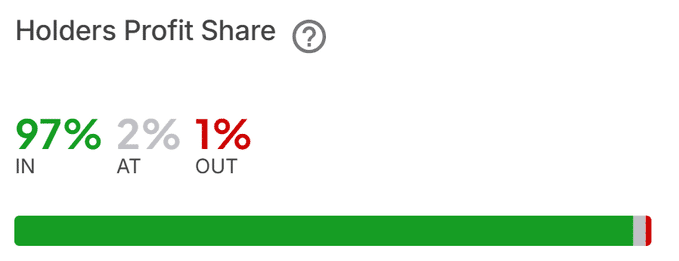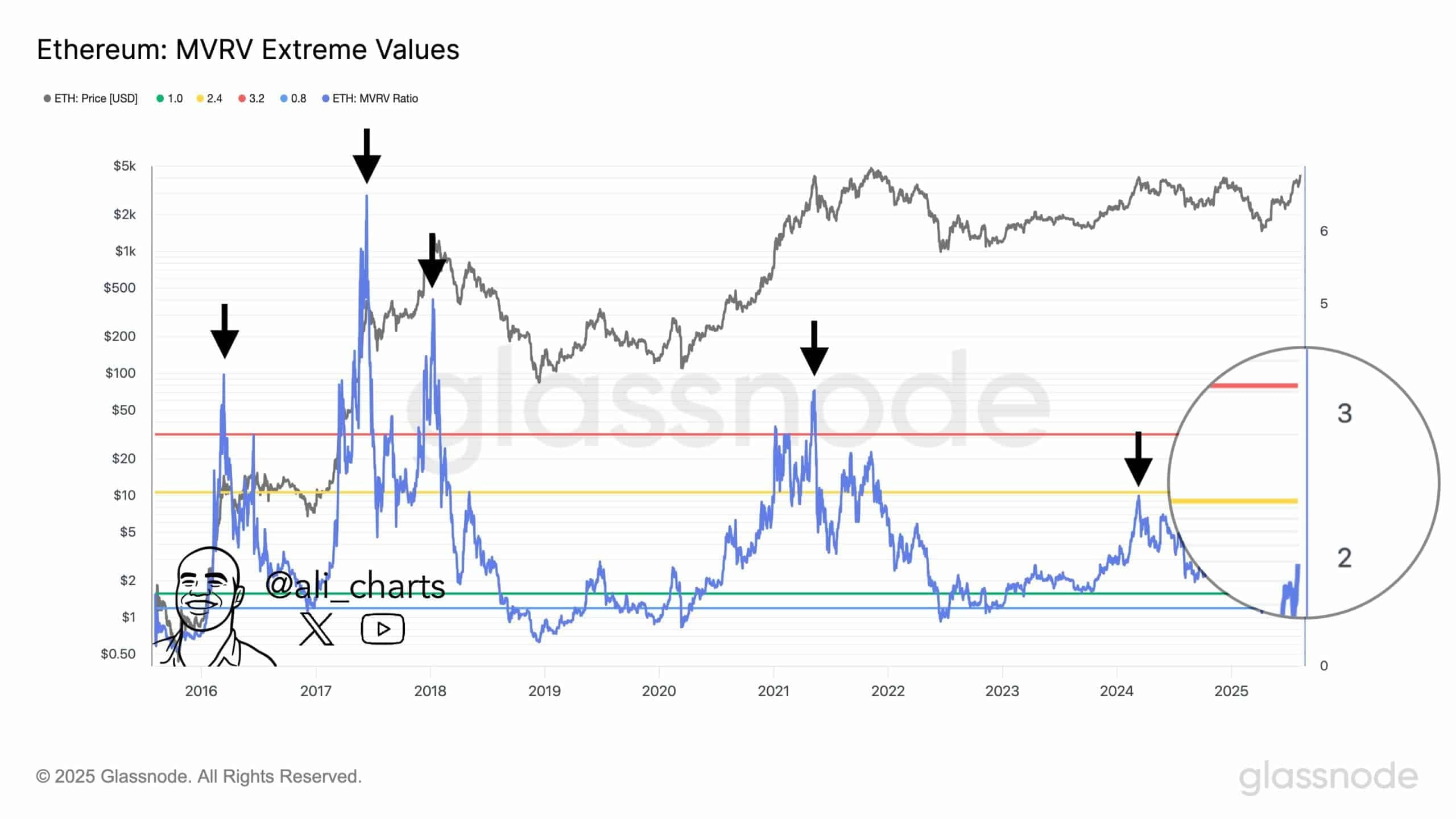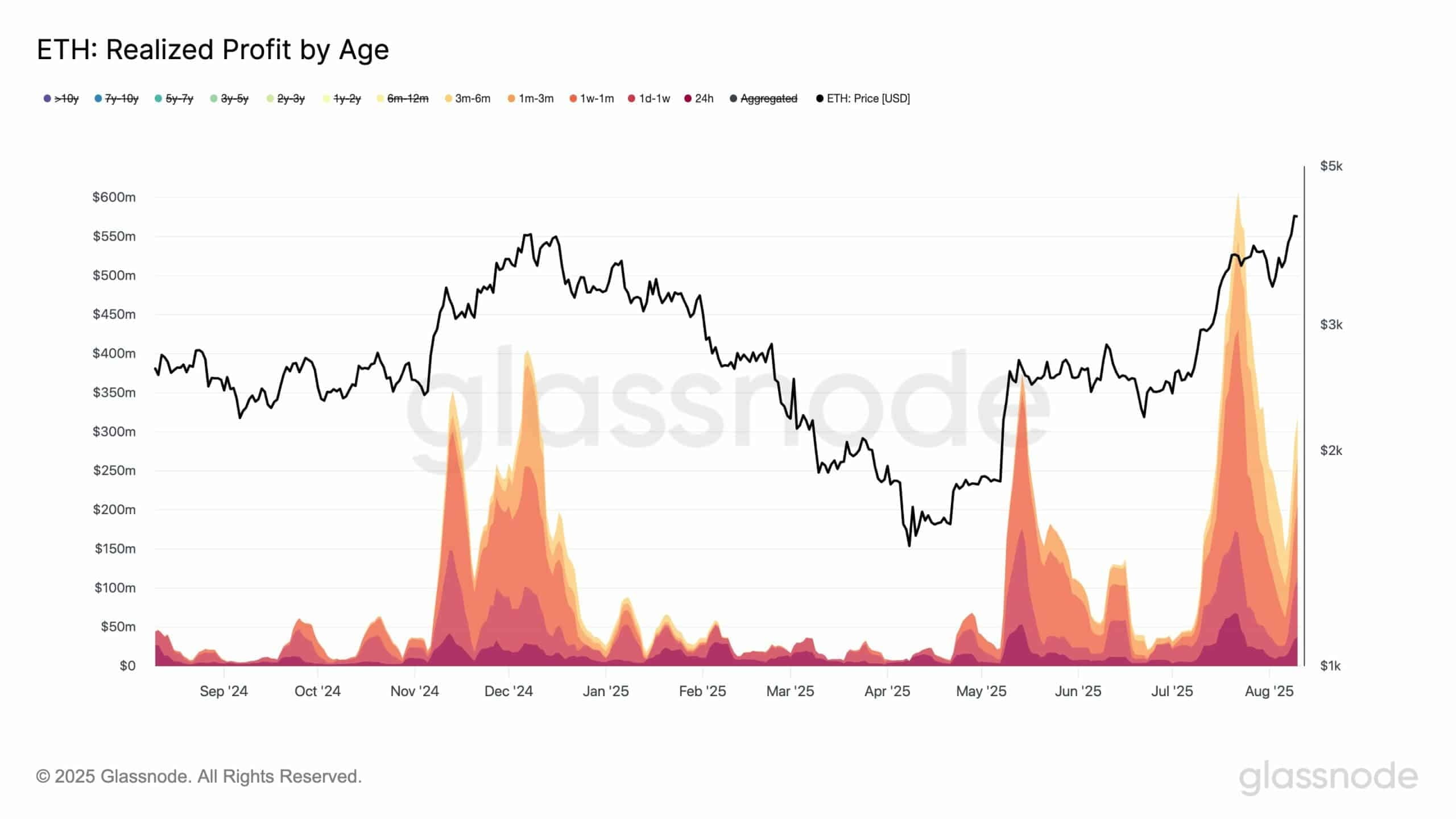Ethereum [ETH] holders' current profits are near historical highs. However, it seems difficult to halt this momentum in the short term. According to on-chain data, this altcoin's rally may rise further before eventually cooling down.
The cashing out speed of short-term traders is faster than at any time last year, but it has not led to market weakness.
Almost every ETH holder is in profit!
Currently, 97% of Ethereum addresses are in profit, so you can expect the market to be nearing exhaustion.
 However, Sentora's data highlights the almost universal gains among holders. Meanwhile, Glassnode's MVRV extreme indicator remains far below the historically overheated red zone that marks cycle tops.
However, Sentora's data highlights the almost universal gains among holders. Meanwhile, Glassnode's MVRV extreme indicator remains far below the historically overheated red zone that marks cycle tops.
 MVRV hovers around the 2.0 level, with room to break above the peaks of 3.0-3.2. The last time these levels were seen was during the boom periods at the end of 2017, 2021, and 2023.
MVRV hovers around the 2.0 level, with room to break above the peaks of 3.0-3.2. The last time these levels were seen was during the boom periods at the end of 2017, 2021, and 2023.
Therefore, it can be said that the market may be in an early to mid-profit realization phase, rather than at the final peak.
As cryptocurrency analyst Ali Martinez pointed out, this pattern may indicate greater upward potential, especially if the profit-taking by short-term holders is absorbed by sustained demand.
STH leads the surge in Ethereum profits
The latest wave of profits in Ethereum is primarily driven by short-term investors.
In fact, Glassnode's data shows that ETH's 7-day SMA realized profits reached $771 million per day in July, surpassing the peak in December 2024. Before slightly retreating to $553 million this month, ETH maintained this level.
The profits of long-term holders are also on par with the peak in December. It is worth mentioning that the recent accelerated growth mainly comes from addresses that have held ETH for less than six months.
 This means that fast-acting traders are utilizing price strength more aggressively than in previous cycles.
This means that fast-acting traders are utilizing price strength more aggressively than in previous cycles.
However, this situation has not triggered the kind of profit saturation typically seen before major market tops.
The ongoing rotation from long-term stability to short-term cashing out indicates that this rally is driven by active trading rather than weakness. If demand remains, it leaves room for further price increases.
